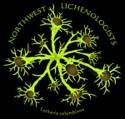I have added 3 new species to my photo gallery; all were growing on the same fallen Quercus garryana twig. I have identified them as, Parmelia sulcata, Ramalina farinacea, and Usnea subfloridana. Please sound off if I have aired or if you need more info.
The immediate area of ~ 40 acres is a Garry Oak/Snowberry and Doug Fir association, with understory trees Oval-leaved Viburnum, Saskatoon Serviceberry, Vine Maple, Pacific Ninebark, Black Hawthorn, and Indian Plum among others. Based on dendrochronology from a recently-fallen Quercus garryana slab, the grove is ~225 yrs. old. The grove is cut through by a creek, it's surrounded by wet prairie remnant on 3 sides, and bounded on 1 side by a road.

